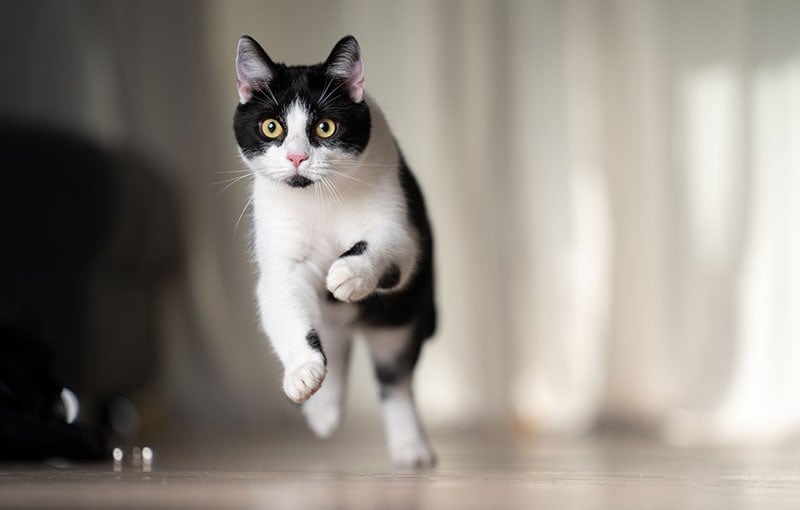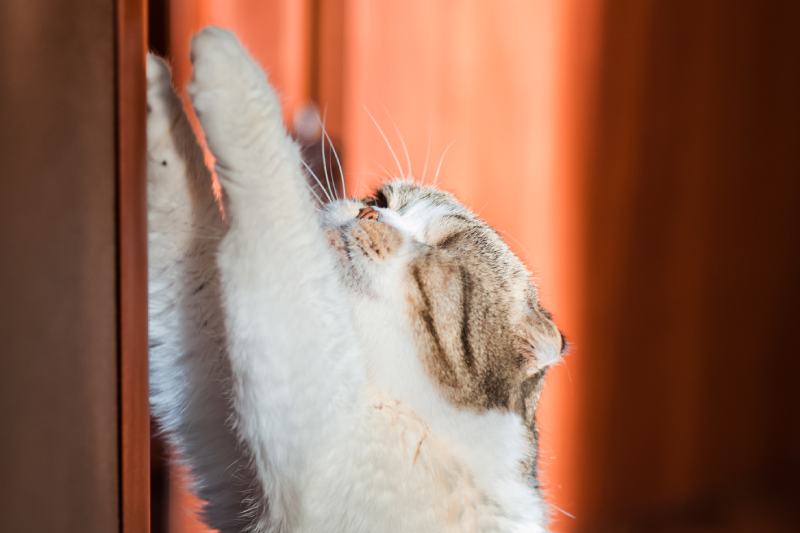How Long Do Tuxedo Cats Live? Average Lifespan, Data & Care
By Lorre Luther
Updated on

Click to Skip Ahead
If you’ve recently adopted a sweet tuxedo cat, you may wonder how long you can expect to spend with your new family member. It’s perfectly reasonable to wonder if the kitty you just welcomed into your home will likely live for 15 years or if there’s a chance the two of you could be celebrating your new love’s 20th birthday together. Tuxedo cats aren’t a breed but are bi-color cats with piebald traits. They have two-toned fur, and one of the colors must be white. They’re often black and white, with dark backs and white chests and stomachs.
What’s the Average Lifespan of a Tuxedo Cat?
Tuxedo cats generally have lifespans that match their “breed mates.” Maine Coons, for example, usually live 12 to 15 years. One with tuxedo coloring would have the same general life expectancy. Domestic shorthair cats generally have lifespans ranging from 13 to 17 years, which would also apply to domestic shorthair tuxedo cats. However, it’s relatively common for some cats to live 20 years. Outdoor cats often have much shorter and live between 2 and 5 years.

Why Do Some Tuxedo Cats Live Longer Than Others?
You can do a few basic things to support your beloved tuxedo cat’s longevity. Below, we’ll discuss how to keep your buddy happy and healthy.
1. Feeding & Diet
Tuxedo cats don’t have specific dietary needs linked to their coats. All cats benefit from high-quality food that provides the vitamins and other nutrients they require in the correct amounts.
Brands that meet the American Association of Feed Control Officials (AAFCO) nutritional guidelines are good places to look. It’s best to look for formulas that provide nutrition targeted to your cat’s age and lifestyle to ensure they get the nutrition to keep them healthy as their needs shift.
Breeds, such as Maine Coons, more likely to become overweight, benefit from portion control. Obesity is often linked to cats developing chronic illnesses such as osteoarthritis and heart disease.

2. Environment
All cats, including ones with tuxedo coats, live longer lives if they stay indoors. Indoor cats don’t get injured in fights over territory or mating opportunities and generally don’t come into contact with many infectious diseases. They rely on their human family members to provide the fun and exercise they’d otherwise get by prowling and stalking outdoors.
Indoor cats thrive when given several toys to play with that engage their instincts and provide a bit of fun. Cats also need scratching posts and plenty of high perches to relax and enjoy the world from above.
3. Grooming
Tuxedo cats have varying grooming needs depending on their coat type. Short-haired cats usually need to be brushed about once a week, but long-haired kitties benefit from daily brushing to prevent tangles and mats. Pets without fur, like Sphynx cats, require regular baths.
Cats with fur generally only require baths when they’re filthy or get into something that can cause a reaction. Cats should have their teeth brushed at least three times a week to help limit the development of plaque that can lead to dental disease. They should also have their nails trimmed every 2 weeks.

4. Healthcare
Pedigree tuxedo cats may have breed-specific conditions to keep in mind. Maine Coons, for instance, are prone to developing hypertrophic cardiomyopathy (HCM) and polycystic kidney disease (PKD). Maine Coons with tuxedo coats run the same health risks as their breed mates. But there are a few conditions, including obesity and dental disease, that can impact all cats, regardless of the breed.
Obesity is the most common preventable feline disease among North American Cats. Being overweight can cause cats to develop chronic diseases such as diabetes and hypertension. Ensuring cats eat appropriate amounts of food is critical to keeping them healthy. And providing at least 20 to 45 minutes of daily playtime can help cats burn a few calories and eliminate any pent-up energy.
Cats also require regular veterinary visits, and kittens need to be seen multiple times in their first year of life. Senior cats should be examined by a veterinarian at least two times a year to catch potential health conditions as quickly as possible.
The Life Stages of a Tuxedo Cat
Cats have four life stages: kitten, adult, senior, and geriatric. The kitten stage lasts from birth through the first year of life. Cats are considered adults when they’re between 1 and 8 years old. Cats between 8 and 15 are classified as senior pets. Extremely old cats, those over 15, are considered geriatric.

How to Tell Your Tuxedo Cat’s Age
Kittens are tiny, and their weight in pounds is close to their age in months. A 4-month-old kitten likely weighs around 4 pounds. The ages of older kittens can sometimes be narrowed down by looking at their teeth. Kittens’ baby teeth start to fall out when they’re around 4 months old, and most have a full set of adult teeth by the time they’re 7 months old.
Healthy adult cats usually have thick, well-cared-for coats and don’t need much help keeping themselves clean. Cats older than 10 often have cloudy eyes, and they sometimes have dull coats and difficulty grooming themselves. Geriatric cats are sometimes thin, have missing or rotting teeth, and often have trouble getting around.
Conclusion
Although the tuxedo pattern can be found in pedigree breeds, it’s also commonly seen in regular old moggies. Pedigree tuxedo cats enjoy lifespans in line with their breed mates and can live as long as solid-colored cats. A tuxedo Sphynx is likely to live 15 to 20 years, just like other Sphynx kitties. Simply having the coat pattern won’t extend or shorten a particular cat’s life. Tuxedo moggies can expect to live anywhere from 13 to 17 years, which is average for companion cats.
Featured Image Credit: Liao Zhiwo Henry, Shutterstock












